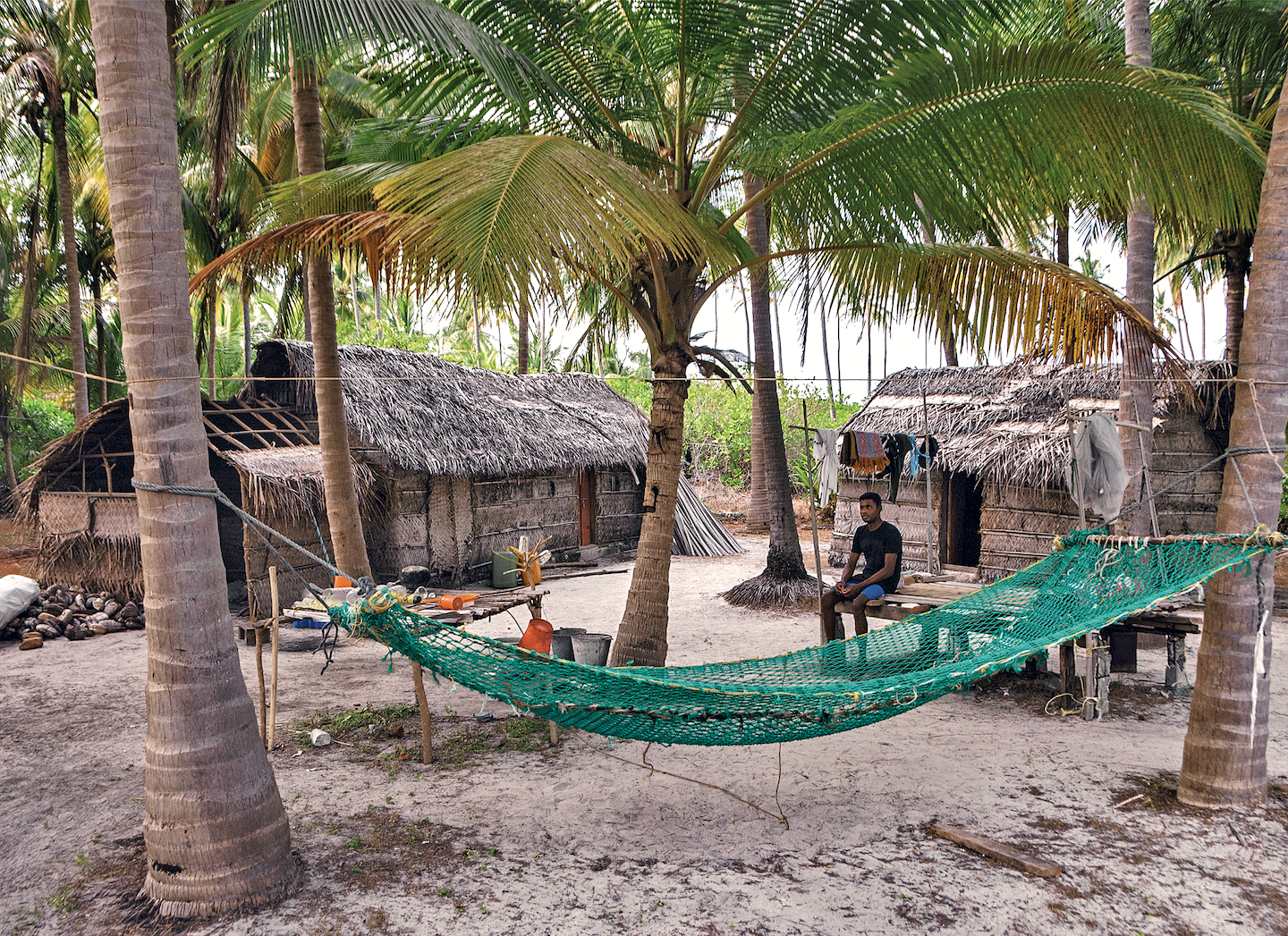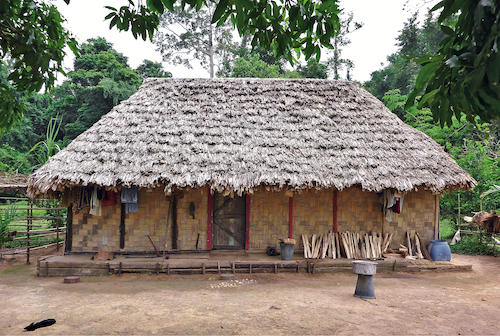The islands of Andamans, Nicobar and Lakshadweep have vernacular traditions unique to their tribal cultures and based on available building material. The lifestyles on the islands vary from the hunting and food gathering existence of the negroid Jarawa and Onge to the mongoloid Nicobarese. The Sentinelese are still unapproachable on their islands and they appear to be in the hunting and food gathering stage. Lakshadweep with its turquoise waters has its own remarkable lifestyles and huts made of daub and thatch.
In the absence of stone and bricks, the building material of choice is wood, grass, palm fronds, bamboo, earth and thatch. The Nicobarese did wonders with these basic materials and built residences that were much more than simple huts – large structures with different levels and well laid out in the inside. Unfortunately, not much remains of these earlier structures (some of which had the form of beehives) and whatever remained was destroyed by the 2004 tsunami. Hence photographs of such earlier vernacular structures have been obtained from the archives of the Anthropological Society of India. Car Nicobar is only a hundred odd kilometres from Sumatra, Indonesia, so their structures may have had an influence from there. Some of the Nicobarese house forms have similarities to the Indonesian types, as currently exhibited in Taman Mini – a collection of tribal structures – in Jakarta 🟥

